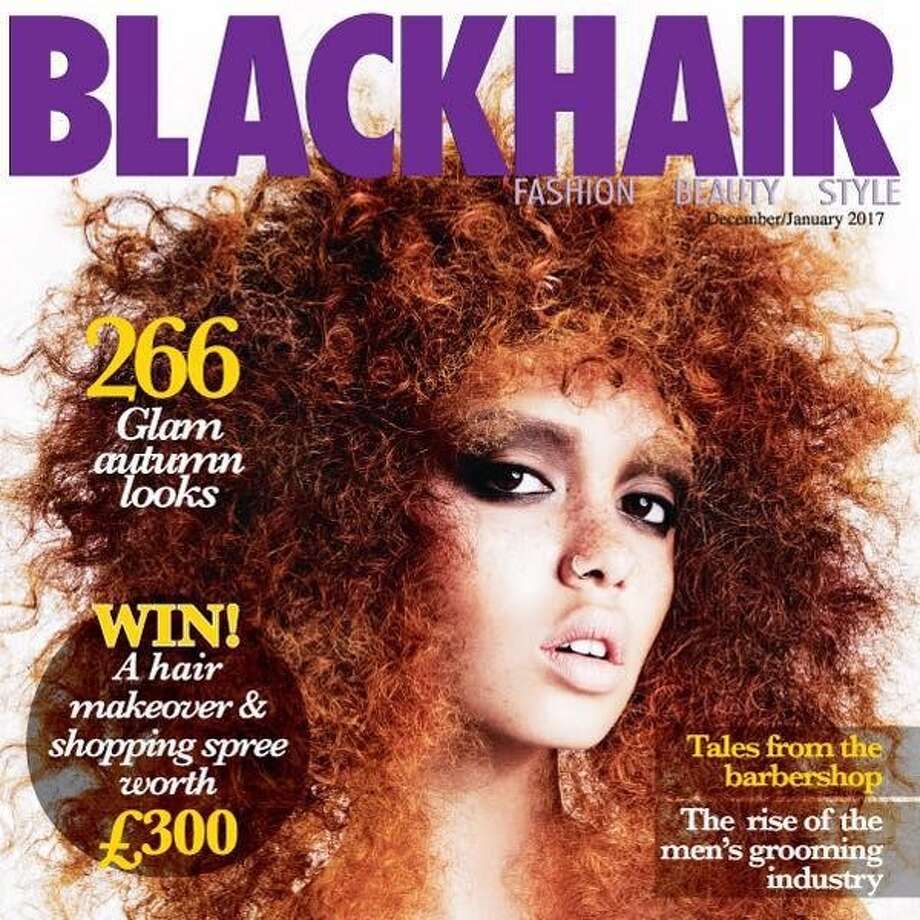
Emily Bador is a white woman. She is not, therefore, a black woman. Normally, that wouldn't be news worth reporting, mostly because it isn't news.
But her race came into play recently due to the new cover of Blackhair magazine, a British glossy that bills itself as "an international bi-monthly magazine for the style conscious black woman. Packed with 100's of hair inspirations, fashion, lifestyle and celebrity interviews, we are one of the leading publications for women of colour in Europe."
The magazine, which generally if not always features black or mixed-race models, used her photograph for the cover of its December/January issue. The editors have admitted they didn't know she was white.
Bador's hair is naturally straight as a ruler. But on the cover, it's curly and kinked, a more Afro-centric, natural hairstyle traditionally associated with black women.
In an Instagram post that has been liked more than 2,000 times, Bador said the photograph was several years old, and she never planned for it to be used on the cover of Blackhair. Furthermore, had she known, she wouldn't have allowed it.
She stated embarrassment at the photo, which she said was a form of cultural appropriation - which refers to adopting elements of another's culture, generally to one's benefit.
"This image is (I think, although I'm not 100% sure) about 3/4 years old, it was never intended to be on the cover of this magazine," she wrote. "If I had known it was going to be published, I would never have condoned it. I'm upset and angry I was never asked by the photographer/hair salon/anyone if this image could be used for the cover Black Hair."
She apologized for any cultural appropriation of which she might be guilty, claiming she was around 15 years old at the time of this particular shoot and "didn't understand cultural appropriation or the impact it has on POC."
She wrote:
"Growing up in a very very white city, I had no idea the struggles black women face and how often they were persecuted for their hair. I didn't understand how black women are constantly told their natural hair is inappropriate/unprofessional for the work place, or how young girls are told they can't go to school with natural hair. I didn't understand that shoots like this support the very Eurocentric beauty standard that the mainstream media focus on which reinforce the idea that black features are only ok on white women. I didn't understand that as a white passing woman I'd be praised for this hair, but if I was a black woman I'd be persecuted."
According to Blackhair's editor Keysha Davis, who wrote a note on the magazine's Facebook page, the publication runs photographs they receive from PR companies and salons. They specifically request that these photographs be of a black or mixed-race women.
Davis wrote that the magazine staff didn't know Bador was not black or mixed-race.
"This morning it was brought to our attention that the model gracing our December/January issue is not of black or mixed-race heritage," Davis wrote. "We were obviously not aware of this prior to selecting the image. We often ask PR companies/salons to submit images for the magazine, specifically stating that models must be Black or mixed race. We can only take their word for it, and of course, try to use our own judgment."
Her post continued, "We are keenly aware of how black women are underrepresented in the mainstream media and the last thing we want to do is add to our erasure."
Finally, Davis thanked Badar for noticing the cover and speaking up.
For the most part, fans of both Bador and the magazine seemed pleased with the quick response.
One user pointed out that, "Some mixed people do look white from hair to the complexion and she do look mixed nothing to get upset about."
Though some, particularly on Facebook, have demanded the magazine change the cover. Thus far, the editor has not responded to these requests.
The debate over racial diversity both on the cover and inside the pages of magazines - particularly fashion and beauty magazines - has been a long ongoing one.
When Jezebel wrote in June, "Women's magazines, like the print business overall, have a notoriously poor history of foregrounding people of color, whether inside their pages, as subjects of their features, or of course, on their covers. Progress creeps along at the most marginal pace," it was far from the first publication to address the issue."
In 2013, the New York Times ran a lengthy feature titled "Fashion's Blind Spot," which referred to women of color. And five years before that, Vogue published a piece titled, "Is Fashion Racist?"
The answer, according to many, was a resounding "yes."
The industry appears to be addressing these issues, but slowly.
At the close of 2015, Fashionista reported, "cover diversity on the major U.S. publications was almost exactly the same this year as last year."
The site's analysis found that, "in 2014, 27 of 137 covers featured models of color* while in 2015, 27 of 136 did. That's an improvement from 19.7 percent to 19.8 percent."


 Contact The Editor
Contact The Editor
 Articles By This Author
Articles By This Author